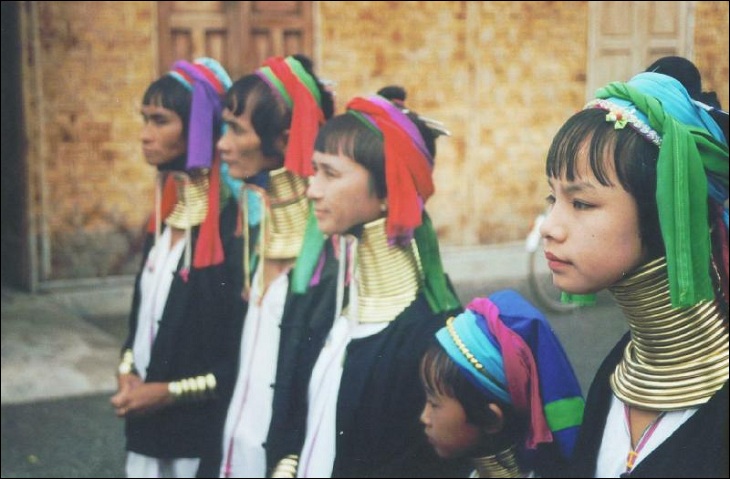The Karen Long Neck Hilltribe Settlement
The Long Neck Hill Tribe - Padung Karen- of Northern Thailand is one of the most well known of all the hill tribes. What has made this particular group so well known is the process through which their women stretch their neck to epic proportions through the use of metal hoops that are placed in ever growing brass rings around the neck starting in early childhood.
This subgroup of the Karen Tribe came to Thailand to avoid political turmoil in their own country of Burma only in the last 100 years. There are about 40,000 Padung, as they are called, living at the Thailand/Burma border at this time. Though the Padung primarily inhabit the border between their home country and Thailand, a few families have settled in with other hill tribes in Thailand, the Karen in particular.

Though the women of the Padung are mostly known for the brass neck rings they wear starting around age 5, used to make their necks appear unusually long, this is not the only type of adornment they wear. The Padung women not only wear the brass neck rings, but they also wear several rings on their wrists and rings going from shin to ankle on their legs. The leg rings are typically covered with a kind of cloth covering, making them far less pronounced than the neck rings.
Some of the Karen-Padung tribes have another way that they show their womanly beauty. This is through the use of elephant tusks in the ear. Married women are pierced with elephant tusks that are about 4 centimeters. As the woman gets older the tusks gradually weight down the ear lobe causing in to get longer and longer. Eventually the woman’s ear lobes become long and floppy. Once the tusks are inserted into the ear lobe they are never removed. They are a permanent sign of marriage. This ancient symbol is why the Padung women are sometimes referred to as the “long ear women”.
This tradition of elongating the ear lobes did not begin with the Padung women. Long before Asia was divided by country and territory ancient people practiced this type of adornment. Though the practice is continued only by women in current day Padung tribes, in ancient times it was a genderless rite of passage. It was meant to illustrate the exquisite beauty of women by enhancing what was revered as one of the most sacred parts of the body. In men the ear adornments were meant to show strength.
The maidens of the group do not wear the ear tusks, since they are reserved for marriage. They wear white dresses as opposed to the red and black dresses that are worn by the married women of their tribes. On the back of young girls’ hands you will also find magical words mean to ensure the girls a good life.

The primary crop of the Padung-Karen is rice. This is a main staple in their diet and a large part of their economic system.

The Padung are primarily animists, like most hill tribes. They have a Buddhist population of about 10%, and a small but ever rising percentage of Christians. The one major holiday for the Padung is the annual fertility and prosperity festival held during the rainy season. This is meant to bring good health and a bountiful harvest.



































